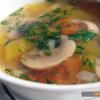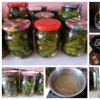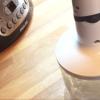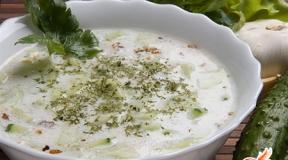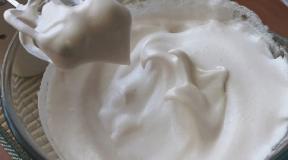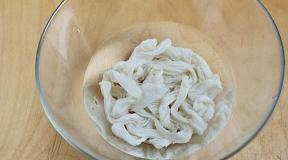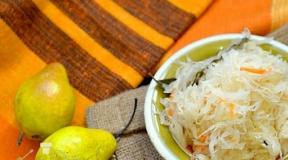Askofen - instructions for use, indications, composition, side effects, analogues and price. In what cases is Askofen-p prescribed: indications for the use of Askofen overdose
Many people know the drug "Askofen-P". What is it taken from? this drug? You will find an exhaustive answer to this question in the materials of this article.
Composition of the medicinal product
Before answering the questions about what "Askofen-P" is, from what doctors prescribe it, etc., you should find out its composition. The presented preparation includes the following active substances:
- acetylsalicylic acid (200 milligrams);
- caffeine (40 milligrams);
- paracetamol (200 milligrams).
In addition, this tool includes the following auxiliary components:
- potato starch;
- povidone (or medical low molecular weight polyvinylpyrrolidone);
- talc;
- emulsion KE-10-12 (silicone);
- calcium stearate;
- oil VGM-30M (vaseline).
Operating principle
The action of such a drug as "Askofen-P" (from which this remedy is used, we will consider a little below), is determined by the properties of its components.

- acts as an antipyretic, analgesic and anti-inflammatory medication.
- Caffeine promotes reflex excitability spinal cord as well as respiratory and expands blood vessels brain, skeletal muscles, kidneys and heart, reduces the feeling of fatigue and drowsiness, increases physical as well as mental performance.
- Paracetamol has analgesic and antipyretic effects.
"Askofen-P": use of the drug
This remedy is often used for mild or moderate pain syndrome, which is caused by pathologies such as lumbago, toothache and headache, myalgia, neuralgia, algomenorrhea, migraine, arthralgia, etc. In addition, adults and children over 16 years, the presented medication is prescribed to reduce elevated temperature, as well as for colds or other infectious and inflammatory diseases.
Contraindications funds
"Askofen-P" tablets - what is this drug used for? Answering this question, you should definitely mention the contraindications to its use. These are, first of all:

- sensitivity to the constituent components;
- erosion or ulcer of the gastrointestinal tract and (especially in the acute phase);
- impaired renal or liver function;
- asthma;
- aortic aneurysm (exfoliating);
- deficiency of G6PD and vitamin K;
- anxiety disorders and sleep disturbance;
- diseases of the heart and blood vessels, as well as paroxysmal tachycardia;
- glaucoma;
- age up to 15 years.
Mode of application
So, the tablets "Askofen-P" - from what this medication is used, we have already found out. In this section, we present to your attention the dosage of this remedy. The drug should be taken orally 2-4 times a day after meals, 1 or 2 tablets.
The interval between doses of this remedy should be at least 4 hours. To significantly reduce the irritating effect, it is recommended to drink the medication with milk or alkaline water without gas. It is also worth noting that it is undesirable to use this tool for more than 5 days.
When a different kind occurs pain most people seek medication in the first place. One of these is Askofen-p. It is a drug that has a combined composition. In addition to relieving pain, Askofen has antipyretic and anti-inflammatory effects.
Askofen - p simultaneously refers to both the group of antipyretics and analgesics. The presence of paracetamol in the composition allows you to effectively knock down increased body temperature.
In addition, there is a powerful anti-inflammatory effect. Acetylsalicylic acid, which is one of the active ingredients, tends to thin the blood. The effect of aspirin is to prevent blood clots. Caffeine dilates blood vessels, activates vasomotor and respiratory processes.
In addition to the above, it has a stimulating effect, depriving drowsiness and an overwhelmed state. Askofen - p is shown for:
- Dental pain syndrome;
- Prolonged migraines;
- Lumbago syndrome;
- Myalgia;
- Algodismenorrhea;
- Increased body temperature;
- The presence of viral diseases;
Contraindications
 Despite its effectiveness, it is not always possible to take Askofen-n in all cases. The point is that it is medicine has a number of contraindications.
Despite its effectiveness, it is not always possible to take Askofen-n in all cases. The point is that it is medicine has a number of contraindications.
It is very important to take them into account before you start taking them. In addition, when taking the drug, the use of alcoholic beverages... It can cause bleeding in organs. gastrointestinal tract ... Askofen-p should not be taken in the presence of the following conditions:
- Asthma;
- Abnormalities in the work of the kidneys and liver;
- Insomnia;
- Diseases of cardio-vascular system;
- Exfoliating aortic aneurysm;
- Internal bleeding of any nature;
- Hemorrhagic diathesis;
- Individual reactions to the components of the drug;
- Lack of vitamin K;
Dosage and method of administration
 At long-term treatment and the drug is prescribed to drink 1-2 tablets up to three times a day, depending on the complexity of the disease. For a one-time relief of the pain syndrome, 1-2 Ascophern tablets are taken - p. The daily dose should not exceed more than 6 tablets. Reception is carried out after the process of eating.
At long-term treatment and the drug is prescribed to drink 1-2 tablets up to three times a day, depending on the complexity of the disease. For a one-time relief of the pain syndrome, 1-2 Ascophern tablets are taken - p. The daily dose should not exceed more than 6 tablets. Reception is carried out after the process of eating.
It is necessary to ensure that the interval between doses is at least 4 hours. Reception is carried out orally using plenty of water. You can also drink the drug with milk or soda water.
As an anesthetic, Askofen-p is used for no more than 5 days; to lower the temperature, it should not be used for more than 3 days. In other cases, the dosage is prescribed individually by the attending physician.
Side effects
With an increase in dosage or a longer use of the drug, it is possible occurrence of side effects... They are manifested in impaired renal and liver function and exacerbation of peptic ulcer disease. In the presence of bronchial diseases, taking Askofen-p can provoke an increase in asthma.
With a single dose of medication, allergic reactions individual character. As a rule, they appear in the form of characteristic rashes, itching, redness of the skin, etc. The occurrence of such a phenomenon is provoked by one of the active components of the drug.
If you experience any of the listed symptoms, you must stop taking and consult a specialist. During treatment, he must monitor the work of the liver and blood counts.
Overdose
 Askofen - p refers to drugs, the intake of which implies compliance with the dosage. Otherwise, unpleasant reactions of the body may occur. In case of an overdose of the drug, nausea, dizziness, ringing in the ears appear. The patient notices characteristic sensations in the stomach, sweating increases and chills appear.
Askofen - p refers to drugs, the intake of which implies compliance with the dosage. Otherwise, unpleasant reactions of the body may occur. In case of an overdose of the drug, nausea, dizziness, ringing in the ears appear. The patient notices characteristic sensations in the stomach, sweating increases and chills appear.
At the same time, the skin begins to turn pale, breathing difficulties appear. In some cases, bleeding may open or cramps begin. When symptoms of poisoning are established, it is necessary to urgently call an ambulance.
To eliminate the symptoms, the patient is hospitalized or treated in a hospital, depending on the severity of the poisoning. In this state, the standard gastric lavage and the intake of activated carbon.
Interaction with other medicinal products
Reception Askofen - p has a number of nuances in use. He is able to enhance the impact of some drugs while taking. These include drugs containing heparin, indirect anticoagulants, and hormonal drugs.
Medicines that are used to remove uric acid from the body reduce their effect under the influence of Askofen - p. Simultaneous administration also enhances the side reactions of analgesics and anti-inflammatory drugs... Therefore, you should be extremely careful when carrying out complex treatment.
 Storage of the medicinal product should be carried out in a dark place, with a temperature not exceeding 25 ° C. Two years after manufacture, the drug is not suitable for use. In this case, there will be no benefit from the medicine, and harm is likely.
Storage of the medicinal product should be carried out in a dark place, with a temperature not exceeding 25 ° C. Two years after manufacture, the drug is not suitable for use. In this case, there will be no benefit from the medicine, and harm is likely.
Despite its positive qualities, Askofen is not the only one of its kind. As analogues of the drug, you can use Citramon, Upsarin Upsa, Aspirin or Citropak. These medicines are similar to Askofen - n in their effect.
The cost of the drug may vary depending on the place of purchase and the manufacturing company. On average, the cost ranges from 20 to 50 rubles per package, which is a blister with 10 tablets. Since the drug is capable of influencing the process of blood clotting, the attending physician should be warned about taking it in the event of an upcoming surgical intervention. This is extremely important.
The use of the drug in this case will be canceled. If there is even a slight sensitivity to the components of the drug, vigilance should be exercised during admission. For example, in patients suffering from a certain predisposition, taking Askofen-p can provoke gout.
During pregnancy
 Experts do not advise pregnant women to take Askofen-p. However, there are situations when it is simply necessary. In the first and third trimesters, the use of the drug is strictly contraindicated. In the second trimester, a one-time appointment is possible. But there must be good reasons for this, since Askofen-p can have a negative impact on the development of the fetus.
Experts do not advise pregnant women to take Askofen-p. However, there are situations when it is simply necessary. In the first and third trimesters, the use of the drug is strictly contraindicated. In the second trimester, a one-time appointment is possible. But there must be good reasons for this, since Askofen-p can have a negative impact on the development of the fetus.
On early pregnancy he can provoke its interruption. In addition, there is a possibility of cleft palate if the medication is taken in the first trimester of pregnancy. At the end of pregnancy, the use of the drug can affect the blood circulation, the process of labor and cause hyperplasia of the pulmonary vessels in the fetus.
Sometimes a pregnancy symptom, such as a rise in temperature, is mistaken for women to be onset. colds, and take a tablet of Askofen-p. As a rule, in such situations, the risk possible complications extremely low. But you can protect yourself by drinking an activated charcoal pill.
Increases or decreases blood pressure
 Very often, Askofen-p is taken and under reduced pressure... There is no information in the instructions on this matter. But given fact takes place. The drug contains caffeine, which can increase blood pressure and improve the condition of hypotensive patients. When it is taken, efficiency increases, weakness and a feeling of drowsiness disappear, and dizziness disappears.
Very often, Askofen-p is taken and under reduced pressure... There is no information in the instructions on this matter. But given fact takes place. The drug contains caffeine, which can increase blood pressure and improve the condition of hypotensive patients. When it is taken, efficiency increases, weakness and a feeling of drowsiness disappear, and dizziness disappears.
Askofen-p is relevant when changing climatic conditions. It is during this period that most people experience strong pressure surges. However, it should be remembered that the drug is not a panacea for regulating pressure, since there is not a word about this in the instructions.
In exceptional cases, hypotensive patients can take the drug, but with extreme caution. People with the opposite problem also wonder if they can use this drug. Since it can significantly increase blood pressure, its intake should be minimized or completely eliminated.
When breastfeeding
 During breastfeeding it is strictly forbidden to take Askofen-p. In case of an urgent need for admission, it is recommended to stop breastfeeding, replacing it with artificial. Together with the mother's milk, not only useful, but also harmful substances enter the child's body.
During breastfeeding it is strictly forbidden to take Askofen-p. In case of an urgent need for admission, it is recommended to stop breastfeeding, replacing it with artificial. Together with the mother's milk, not only useful, but also harmful substances enter the child's body.
The ingestion of the active components of the drug into the body of a small child is fraught with consequences. Reception of Askofen - p at breastfeeding can lead to problems with cardiovascular system, decreased performance of the kidneys and liver, hormonal changes, etc.
In addition, while taking the medication, the child may develop chronic intestinal dysbiosis. Acetylsalicylic acid, which is active ingredient drug, can provoke bleeding, as a result of dysfunction of blood clots.
Askofen-P- combination drug, the action of which is determined by the components that make up its composition.
Acetylsalicylic acid has an analgesic, antipyretic, anti-inflammatory effect associated with the suppression of cyclooxygenases 1 and 2, which regulate the synthesis of prostaglandins; inhibits platelet aggregation.
Caffeine increases the reflex excitability of the spinal cord, stimulates the respiratory and vasomotor centers, dilates the blood vessels of skeletal muscles, brain, heart, kidneys, reduces platelet aggregation; reduces drowsiness, fatigue, increases mental and physical performance.
Paracetamol has antipyretic, analgesic effects.
Indications for use:
Askofen-P used in adults with moderate or mild pain syndrome (headache, toothache, neuralgia, myalgia, chest radicular syndrome, lumbago, arthralgia, algomenorrhea, migraine), in adults and children over 15 years of age to reduce fever, with "colds" and other infectious and inflammatory diseases.
Mode of application
A drug Askofen-P taken orally after meals, 1-2 tablets 2-3 times a day. Maximum daily dose- 6 tablets. The interval between doses of the drug should be at least 4 hours. To reduce the irritant effect on the gastrointestinal tract, the drug should be taken after meals with water, milk, alkaline mineral water.In case of impaired renal or liver function, the interval between doses is at least 6 hours.
The drug should not be taken for more than 5 days when prescribed as an anesthetic and more than 3 days as an antipyretic. Other dosages and dosage regimens are determined by the doctor.
Side effects
Anorexia, nausea, vomiting, gastralgia, diarrhea, erosive and ulcerative lesions of the gastrointestinal tract, gastrointestinal bleeding, hepatic and / or renal failure, increase blood pressure, tachycardia.Allergic reactions: skin rash, Quincke's edema, bronchospasm.
With prolonged use - dizziness, headache, visual impairment, tinnitus, decreased platelet aggregation, hypocoagulation, hemorrhagic syndrome (nose bleed, bleeding gums, purpura, etc.), kidney damage with papillary necrosis; deafness; Stevens-Johnson syndrome, toxic epidermal necrolysis (Lyell's syndrome), Reye's syndrome in children ( metabolic acidosis violations by nervous system and psyche, vomiting, liver dysfunction).
Contraindications
Contraindications to the use of the drug Askofen-P are:... hypersensitivity to acetylsalicylic acid or other nonsteroidal anti-inflammatory drugs (NSAIDs) or xanthines; hypersensitivity to other components of the drug;
... erosive and ulcerative lesions of the gastrointestinal tract (in the acute phase), gastrointestinal bleeding;
... severe liver or kidney dysfunction;
... acetyl-induced asthma salicylic acid, salicylates and other non-steroidal anti-inflammatory drugs;
... hemorrhagic diathesis (von Willebrand disease, hemophilia, telangiectasia, hypoprothrombinemia, thrombocytopenia, thrombocytopenic purpura);
... dissecting aortic aneurysm;
... deficiency of glucose-6-phosphate dehydrogenase;
... portal hypertension, vitamin K deficiency;
. hyperexcitability, sleep disturbance, anxiety disorders (agoraphobia, panic disorder);
. organic diseases cardiovascular system (acute myocardial infarction, heavy course ischemic disease hearts, arterial hypertension), paroxysmal tachycardia, frequent ventricular premature beats;
... glaucoma;
... surgical interventions accompanied by bleeding;
... children under 15 years old.
With caution - hyperuricemia, urate nephrolithiasis, gout, peptic ulcer stomach and / or duodenum(history), severe heart failure.
Pregnancy
The use of the drug is contraindicated. Askofen-P during pregnancy in the I and III trimester, in the second trimester of pregnancy, a single dose of the drug in recommended doses is possible only if the expected benefit to the mother does not exceed the potential risk to the fetus.If necessary, the use of the drug during lactation should stop breastfeeding.
Interaction with other medicinal products
Askofen-P enhances the effect of heparin, indirect anticoagulants, reserpine, steroid hormones and hypoglycemic agents. Reduces the effectiveness of spironolactone, furosemide, antihypertensive drugs, anti-gout drugs that promote the excretion of uric acid.Enhances side effects glucocorticosteroids, sulfonylurea derivatives, methotrexate, non-narcotic analgesics and non-steroidal anti-inflammatory drugs.
Avoid the combination of the drug with barbiturates, antiepileptic drugs, zidovudine, rifampicin and alcoholic beverages (increases the risk of hepatotoxic effect).
Under the influence of paracetamol, the elimination time of chloramphenicol increases by 5 times. Caffeine accelerates the absorption of ergotamine.
Salicylamide, and other stimulants of microsomal oxidation promote the formation of toxic metabolites of paracetamol, which affect liver function. Metoclopramide accelerates the absorption of paracetamol. When taken again, paracetamol can enhance the effect of anticoagulants (dicoumarin derivatives).
Overdose
Symptoms of a drug overdose Askofen-P: nausea, vomiting, stomach pain, sweating, pallor of the skin, tachycardia.With mild intoxication - ringing in the ears; severe intoxication - drowsiness, collapse, convulsions, bronchospasm, shortness of breath, anuria, bleeding. As intoxication intensifies, progressive respiratory paralysis and uncoupling of oxidative phosphorylation, causing respiratory acidosis. If you suspect poisoning, you must immediately apply for medical help.
Treatment: the victim should undergo gastric lavage and prescribe adsorbents (activated carbon).
Storage conditions
At a temperature not exceeding 25 ° C, in a dry, dark place.Keep out of the reach of children.
Release form
Askofen-P - tablets.10 tablets in a contour non-cell or cell packaging.
1, 2 or 3 blisters with instructions for use in a cardboard box. Contoured cell or non-cell packs with an equal number of instructions for use in a group pack.
Composition
1 tablet Askofen-P contains active substances: acetylsalicylic acid 200 mg, paracetamol 200 mg, caffeine 40 mg.Excipients: potato starch, povidone (low molecular weight medical polyvinylpyrrolidone), stearic acid, talc, calcium stearate, silicone emulsion CE-10-12, VGM-30M liquid paraffin.
Additionally
With prolonged use of the drug Askofen-P control of the peripheral cut is necessary and functional state liver. Since acetylsalicylic acid has an antiaggregate effect, the patient, if he is to undergo surgery, must warn the doctor in advance about taking the drug. Acetylsalicylic acid in low doses reduces the excretion of uric acid. This can in some cases provoke a gout attack.During treatment, you should stop drinking alcoholic beverages (increased risk of gastrointestinal bleeding).
Acetylsalicylic acid has a teratogenic effect: when used in the first trimester of pregnancy, it leads to a developmental defect - splitting of the upper palate; in the third trimester - promotes inhibition of labor (inhibition of prostaglandin synthesis), closure arterial duct in the fetus, which causes hyperplasia of the pulmonary vessels and hypertension in the vessels of the pulmonary circulation. Acetylsalicylic acid is released from breast milk, which increases the risk of bleeding in a child due to dysfunction of platelets.
The drug is not prescribed as an anesthetic to persons under 18 years of age, as an antipyretic agent - to children under 15 years of age with acute respiratory diseases caused by viral infections due to the danger of developing Reye's syndrome (encephalopathy and acute fatty degeneration of the liver with acute development of liver failure).
main parameters
| Name: | ASKOFEN-P |
| ATX code: | N02BA71 - |
Forbidden during pregnancy
Forbidden while breastfeeding
Has restrictions for children
Has restrictions for seniors
Has limitations for liver problems
Has limitations for kidney problems
One of the first symptoms to suspect the development of a pathological process in the human body is pain. This is a subjective unpleasant feeling that significantly reduces the quality of life and working capacity. In this regard, there is a need to take pain relievers. The use of combined analgesics, for example, Askofen P., helps to relieve pain quite quickly.
General information about the drug
To eliminate pain of moderate intensity, according to international recommendations, combined drugs are used. They include substances that enhance the effect of the main components. These drugs have antipyretic and anti-inflammatory effects, which can act on the cause of unpleasant symptoms.
Drug group, INN, scope
According to the international pharmacological classification drugs of the last revision, Askofen P is included in the group of combined analgesics-antipyretics. According to the ATC classification, it has the code N02B A51, a group of various combinations of acetylsalicylic acid without psycholeptics. International unclassified name - Acidum Acetylsalicylici + Paracetamol + Caffeinum.
In most cases, the use of Askofen P is resorted to with the ineffectiveness of monocomponent drugs and severe pain syndrome, which significantly disrupts the psychoemotional state and working capacity of a person.
Forms of production and prices for the drug, average in Russia
Askofen P is an inexpensive pain reliever produced by the Russian pharmaceutical company Pharmstandard in tablet form. Each tablet is flat-cylindrical with a dividing strip on one side.
The color can vary from white to light cream, mild marbling is allowed, there is no specific smell. Sold in cartons containing 1 or 2 blisters of 10 tablets. Sold in pharmacies without a doctor's prescription.
The average price for package No. 10 differs in different regions, which is presented in the table.
Composition
The drug contains two non-steroidal anti-inflammatory substances in different quantities (200 mg) - acetylsalicylic acid (more common name is aspirin) and paracetamol. Their active effect is enhanced by 40 mg of caffeine.
As a basis for shaping, shaping and protecting active ingredients from the influence of the environment, potato starch, talc, low molecular weight polyvinylpyrrolidone, silicone, liquid paraffin, citric acid monohydrate, calcium stearate and stearic acid are used.
Pharmacodynamics and pharmacokinetics
Acetaminophen (paracetamol) and acetylsalicylic acid (aspirin) belong to the group of non-steroidal anti-inflammatory drugs. The mechanism of action of paracetamol is associated with blocking the action of both forms of the enzyme cyclooxygenase, which leads to a decrease in the concentration of inflammatory mediators - prostaglandins. The antipyretic and analgesic effect of acetaminophen is due to the effect on the centers of thermoregulation and pain located in the hypothalamus.

Effects of Askofen P
Aspirin has a local anti-inflammatory and analgesic effect by inhibiting the synthesis of prostaglandins in peripheral tissues. Reduces exudation, swelling and hyperthermia in inflamed tissues, reduces the permeability of the capillary walls.
The antiaggregatory effect of acetylsalicylic acid is associated with the irreversible blocking of the activity of the first type of cyclooxygenase enzyme and a decrease in the production of thromboxane A2, a mediator of platelet aggregation and degranulation.
Caffeine is a potent adaptogen and psychostimulant. Strengthens the anti-inflammatory and antipyretic properties of the main components, has a tonic effect on the body, reduces drowsiness and increased fatigue, and increases work capacity.

After oral administration, the expected clinical effect occurs after 15-20 minutes. Absorption of the components occurs in the stomach and small intestine for 30 minutes. It is excreted from the body in the urine, after metabolism in the liver.
Analogs
One of the popular domestic analogues of the drug is Citramon Ultra of the Russian company Obolenskoye FP. The average price for 10 tablets is from 82 rubles. Available in packs of 10, 15 and 30 tablets. Also in demand are Citramon-ExtraCap capsules, Pharmstandard, Russia. They have a faster and more lasting effect. Price - from 88 rubles for 10 capsules.
The most expensive is the imported product. An increased dosage (0.25 g of aspirin, 0.5 g of paracetamol and 65 mg of caffeine) allows you to get the fastest and most lasting clinical effect. The tool effectively eliminates signs of inflammation, fever, relieves pain. In pharmacy chains, packs of 16 tablets are available, costing from 193 rubles.
Indications and contraindications
So what do these pills help with? Most often they are used to relieve acute headaches caused by mental and emotional stress, meteosensitivity, low blood pressure.
Also, indications for the use of Askofen P are the following symptoms:

It is not recommended to prescribe the drug to persons prone to high blood pressure due to the presence of caffeine in the composition, which has exciting and vasoconstrictor properties.
When planning the treatment of a particular disease, it is important to consider the following given caveats:

Instructions for use and drug interactions
According to the instructions for use provided by the manufacturer, you need to take the tablets after eating food, drinking plenty of water. Drinking tea, juice, coffee, chewing and dissolving is prohibited. For decreasing adverse reactions associated with an increase in gastric acidity, it is recommended to drink Askofen P with milk or alkaline mineral water.
The most rational single use of Askofen P for relief of acute pain syndrome.
If longer therapy is required, the drug should be taken 2-3 times a day. The minimum time interval between doses is 4 hours. The maximum daily dosage is 5 tablets, the duration of the course of treatment as an anti-inflammatory agent is no more than 7 days.
When using the drug with alcohol, the risk of developing toxic hepatitis and hepatonecrosis is significantly increased. Ascofen P is forbidden to be used simultaneously with other medicines, which include paracetamol and aspirin due to the likelihood of an overdose.

It is contraindicated to use this drug when treating with the following drugs:
- Monoamine oxidase inhibitors.
- Cytostatics.
- Metoclopramide.
- Warfarin.
- Isoniazid.
- Domperidone.
- Benzobromarone.
- Phenobarbital.
- Rifampicin.
Possible side effects and overdose
Askofen P can cause negative reactions from various systems and organs:









